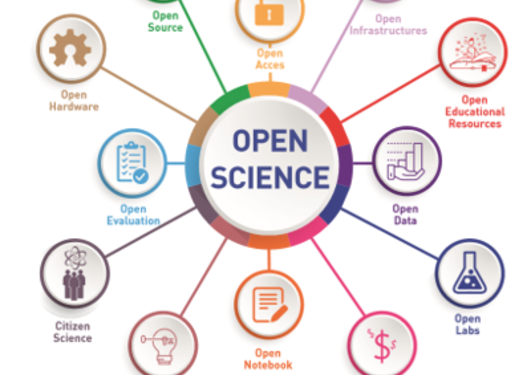What is research data?
Research data can be defined as all data produced or collected by the researcher in a research project. This includes information, particularly facts or numbers, gathered or generated to support claims in the literature, such as statistics, results of experiments, measurements, fieldwork observations, surveys, interview recordings, images, etc.
What are the FAIR principles?
The FAIR principles are a set of guidelines for open research data, standing for:
- Findable - data should be discoverable.
- Accessible - data should be easily accessible.
- Interoperable - data should be able to be opened, understood, combined, reused, and processed without restrictions, both now and in the future.
- Reusable - data should be reusable.
For research data to be reusable, its quality must be high. Therefore, both data and metadata must be findable, accessible, and interoperable.
Where can I archive and share my research data?
To make your research data visible and accessible, you should choose a discipline-specific archive. Such archives can be found on re3data.org, which is the largest and most comprehensive registry of available data repositories. An alternative is fairsharing.org.
If you cannot find an appropriate discipline-specific archive, as a researcher at the University of Bergen (UiB), you can archive your data in DataverseNO.
Please also see our page on Open access to research data.
What is metadata?
Metadata is structured information that describes, explains, locates, and makes it easier to retrieve and use a source of information. In short: data about the data. To help make your data reusable and accessible for you and others in the future, you must create and archive accurate metadata alongside your data.
The Digital Curation Centre (DCC) provides an overview of discipline-specific metadata.
Do I have to make all my research data openly available?
Not necessarily. You must decide which data to store, which data you want to keep, which data should not be openly available, and which requirements apply from funders, the university, and/or any legal or regulatory requirements.
If there are no specific requirements, we recommend researchers consider the following: Which data are necessary to reproduce or validate the results? Note that this may include code. Which data have potential for reuse by others?
The Digital Curation Centre (DCC) offers useful guidance: ‘Five steps to decide what data to keep’
Are there "best practices" for handling research data?
The following components are necessary for good management of research data:
See Deposit Guide for DataverseNO or DataONE Best Practices Primer for more information.
What are archival-worthy formats?
Archival-worthy file formats ensure that your data can be read by anyone, including in the future. Certain file formats are more likely to remain readable over time than others. Such formats are typically:
- Non-proprietary
- Open, with documented international standards
- Widely used in the research community
- Use standard character encoding, preferably Unicode (e.g., UTF-8)
- Uncompressed
When archiving your data, ensure you upload your files in an archival-worthy format in addition to the original file format. Also, make sure all your files contain a valid file extension, such as .txt, .pdf. More information and examples of archival-worthy formats can be found at the Dutch national expert center for archiving research data: Data Archiving and Networked Services (DANS)


